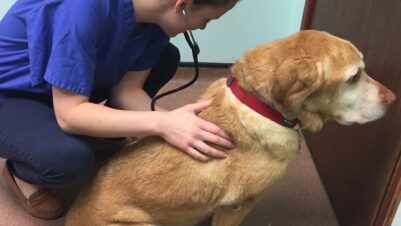RE-HOMING for problem behaviour is sometimes a reasonable option but it is neither a panacea nor something to be approached lightly.
Re-homing any companion animal is a serious business that carries with it a number of risks, principally the safety and welfare of everyone, human and animal, involved and the future life prospects of the individual under consideration.
This is why all experienced and professional rescue organisations have comprehensive, detailed relinquishment procedures in place. These are mandatory and they insist that people who are “gifting” animals to them provide as wide a range of information about the pet as possible.
Time-pressure or distress are not considered a good enough excuse to avoid detailed discussion of, for instance, the animal’s origins, socialisation history, temperament, sensitivities, lifestyle, basic husbandry, likes and dislikes and training.
There will, of course, be some situations where it is simply not possible for those surrendering the pet to provide such details; when, for example, the animal has been picked up wandering in the street and remained unclaimed or executors unfamiliar with it are handing over a deceased person’s remaining companion.
But exceptions of this sort aside, the whole purpose of the process is obviously to allow as much continuity as possible in terms of management and handling and to give those involved in the actual re-homing the background to make the process work well.
After all, it is the individual as well as any organisation’s reputation that is likely to suffer if results are disappointing and the re-homed animal subsequently comes bouncing back.
Those of us in general and behavioural practice who are drawn into situations where re-homing becomes an option, if not the only one that seems feasible if euthanasia is to be avoided, can certainly learn from our colleagues in the rescue world.
Indeed, it could reasonably be argued that we should do so, because recycled pets passed on by us are no less deserving than those fortunate enough to fall into the hands of the best rescue centres we have.
Whoever we are, in whatever context, our aim should always be to set the animal on course to succeed when it moves into its adopters’ realm. And for him or her to do so usually requires not only a suitable choice of new home, knowledge, understanding and patience but as much in the way of familiar experiences and continuity of care as possible.
Predictability, after all, is what makes any of us feel safe and secure, whatever our species, and it generally forms the basis for us to behave in the most acceptable manner possible whatever the circumstances.
Another dimension
In addition to the usual essentials, with re-homing due to problematic behaviour more complications inevitably enter the scene and a wider range of issues needs to be examined.
Obviously, the nature of the problem, its longevity, severity and so on matter as do the context in which difficulties appear, their frequency, whether other individuals are involved, who they are and so on.
In fact, every aspect of the behaviour that has made it unacceptable in its current and/or previous circumstances should be properly and thoroughly documented as well as anything the animal does that makes it an acceptable pet.
We should also never forget that this level of diligence is important for more than the animal’s benefit. It’s easy when doing one’s best for an apparently deserving and needy pet to overlook one’s own good.
Liability is an issue that in the veterinary and behaviour worlds needs attention if we are to avoid potential disasters and sleep well at night. Public safety is always of paramount importance but with companion animal behaviour problems, liability can be a much wider issue.
Potential physical damage to property rather than people may not immediately spring to mind when considering what to do with a problem pet but the financial and associated emotional toll on those who suffer destruction of furnishings, fittings and personal possessions in the home environment can be significant.
For instance, I once dealt with clients who had purchased at considerable expense a very swish, Italian designer sofa with leather upholstery. Not only that, they had waited for months on a list of would-be purchasers before their very own item was available.
Unfortunately, during interior building work for which they had failed to prepare the cat’s facilities adequately, it became a substitute litter tray. The resultant insurance claim was eyewatering and they were back on the list again – this time awaiting replacement cushions.
As an outsider not much interested in such items and more concerned about the emotional trauma the cat had gone through, it was difficult to get very worked up about the sofa. But this serves as a salutary reminder.
Had these been new pet owners recently in receipt of a known house soiler whose problem behaviour had been inadequately investigated or underplayed in order to “find him/her a good home”, the financial buck might well have landed at the door of the well-meaning individual(s) who had “rescued” the cat.
Nice, caring people
We are nice people who care about animals. That’s why we do what we do, whether in the general practice or referral worlds. We’re also good at helping people resolve their problems.
When, however, for whatever reason, we approach the thorny subject of re-homing as a solution for problematic behaviour, in the interests of everyone, including ourselves, we must take especial care.
We need to have well thought out, appropriate protocols in place that will help us ensure we gather together all the relevant facts and examine them clearly with cool heads. Only then can we help people make the best decisions possible for the animal(s) in question.
And in doing so, because sadly sometimes, no matter how hard we try, the “right” home for a particular problem pet will simply not exist, it always helps to bear in mind the old adage: ultimately “we are just enablers, we are most definitely not magicians”.






